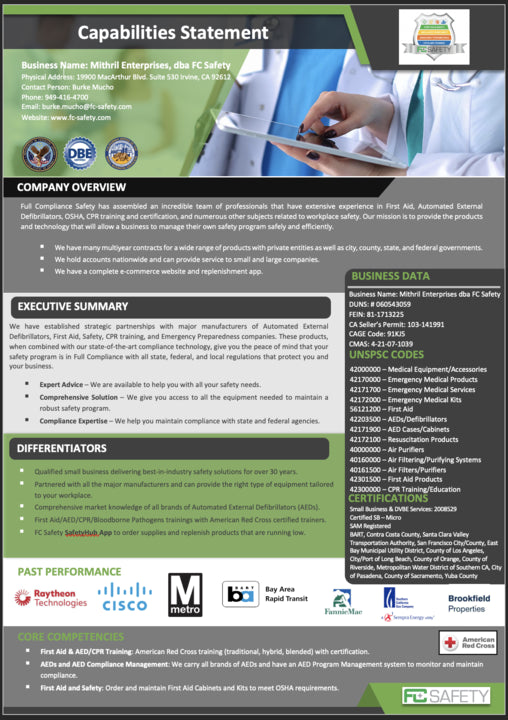Building a Safer Workplace with a Strong Violence Prevention Plan
Share
Building a Safer Workplace with a Strong Violence Prevention Plan
Verbal threats, physical fights, harassment. Workplace violence isn’t just harmful, it disrupts business, lowers morale, and creates serious legal risks. Now, California’s SB 553 is forcing action. California employers with 10 or more on-site workers must have a Workplace Violence Prevention Plan (WVPP) in place. But compliance alone won’t keep people safe. This guide breaks down what SB 553 requires, why it matters, and how businesses can go beyond the law to stop violence before it starts.
What Is a Workplace Violence Prevention Plan?
A WVPP is a formal strategy for identifying, preventing, and responding to workplace violence. Under SB 553, California law defines workplace violence as:
- Threats, intimidation, or harassment
- Physical violence, including assaults and use of weapons
- Psychological harm from persistent bullying or threats
The law requires a site-specific plan, meaning businesses with multiple locations must tailor their plans to each workplace. A one-size-fits-all approach won’t work.
Key Requirements Under SB 553
To comply with SB 553, businesses must implement a detailed violence prevention plan that includes:
- Designation of Responsible Personnel: A designated team or individual must be responsible for managing and updating the WVPP.
- Workplace Violence Hazard Assessments: Employers must conduct regular risk assessments to identify and address potential violence threats.
- Incident Reporting & Response Procedures: Companies must provide employees with a confidential way to report concerns without fear of retaliation.
- Emergency Protocols: Businesses must have clear procedures for responding to violent incidents, evacuations, and medical emergencies.
- Ongoing Employee Training: Employees need initial and annual training on recognizing and responding to threats. Additional training is required if new risks emerge.
- Recordkeeping: Employers must keep a Violent Incident Log for at least five years and employee training records for one year.
Compliance isn’t a one-and-done task. A WVPP must be regularly updated to keep up with evolving threats. While a well-designed plan creates a strong foundation, its effectiveness depends on how well it identifies and addresses real, ongoing risks.
How to Assess Workplace Violence Risks
Not all workplaces face the same risks. The key to preventing violence is knowing where your vulnerabilities are and addressing them before they escalate.
-
Public-facing roles (e.g., retail, healthcare, customer service)
-
Handling cash or valuables (e.g., banks, convenience stores)
-
Working alone or in isolated areas
-
Late-night or high-stress environments
How to Conduct a Risk Assessment
- Identify High-Risk Areas: Evaluate where past incidents have occurred. Are certain locations, shifts, or roles more vulnerable?
- Review Past Incidents: Look at trends in workplace violence reports. Patterns often reveal predictable risks.
- Gather Employee Input: Employees notice risks that management might overlook. Anonymous surveys can reveal safety concerns before they become incidents.
Recognizing risks is crucial, but knowing what to do next is just as important. Many businesses struggle with how to respond effectively, this is where a structured, expert-backed solution makes all the difference.
How FC Safety and ThreatZero Can Help
Most workplace violence incidents show warning signs weeks or months in advance. The problem? Many businesses lack the tools to recognize and respond to these signs before violence occurs.
That’s where ThreatZero, brought to you by FC Safety, comes in. ThreatZero is an all-in-one violence prevention program designed to help businesses identify risks, intervene early, and build a culture of safety. Here’s how it works:
- Training: Employees and leadership learn how to recognize early warning signs and take action.
- Reporting: A confidential, easy-to-use system allows employees to report concerns about potential threats before they escalate.
- Assessment: A structured, expert-driven process helps organizations evaluate threats quickly and determine the best course of action.
Workplace violence isn’t just a compliance issue; it’s a serious safety risk. A reactive approach isn’t enough. FC Safety and ThreatZero provide the tools, training, and technology businesses need to stop workplace violence before it starts.
Don’t wait for an incident to happen. Contact FC Safety today and let ThreatZero help you prevent workplace violence before it’s too late.

